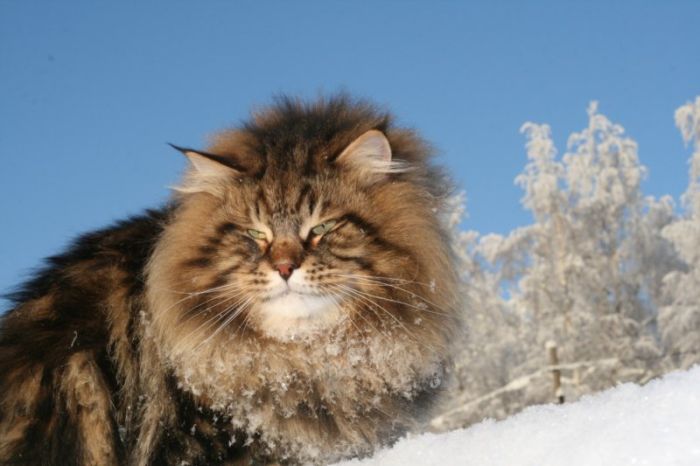Amur Ezra, Siberian Cat In The Winter
|
Siberian cats tend to come into reproductive readiness earlier than other breeds, sometimes as young as five months. It is thought that this is related to the breed's closeness to its natural wild state. Feral cats often die young due to harsher natural conditions. Achieving reproductive ability early and having large litters provides a biological balance to this. On average, a Siberian litter consists of five to six kittens, as compared to the average litter of three to four kittens in breeds who have been registered as pedigreed cats. However, Siberian litters may consist of as few as one and as many as nine kittens.
Siberian cats are excellent parents, with the fathers helping to care for kittens if they are allowed access to the nest. Parents are often strongly bonded and some mothers will only mate with one male. Atypical for cats, teenage male Siberians have been seen cuddling and grooming their cousins and siblings. Siberians, due to their communal nature, often do better in pairs in captivity.
If a Siberian is not desexed, some queens (females) have been noted to have litters as late as nine or ten years. However, kitten mortality is generally lower when the queens are between 18 months and five or six years of age. This is due to several factors: physical and emotional maturation of the female, health and vitality of the queen, and a natural predisposition to healthier offspring from younger mothers.
Males can father kittens from as young as five months to over ten years. In regions where the breed is rare and expensive a long term breeding career for a pedigreed male can create a risk of Popular Sire Syndrome, in which one male has an overly large genetic influence on the breed. In Eastern Europe, where the breed is very common and less expensive, this issue is less likely to arise.
|
|















